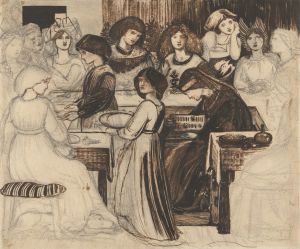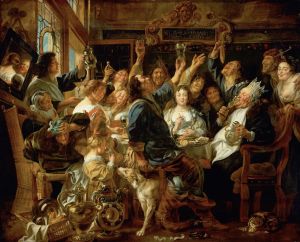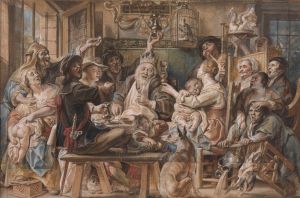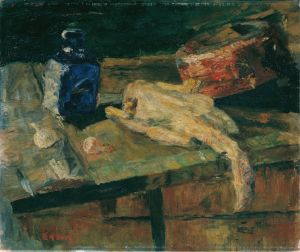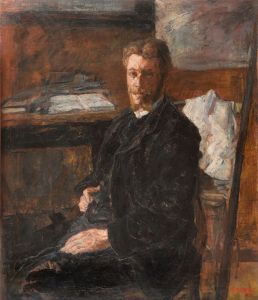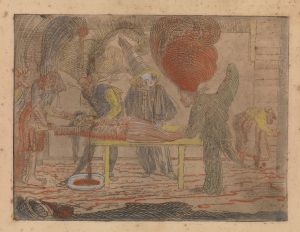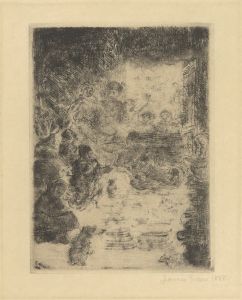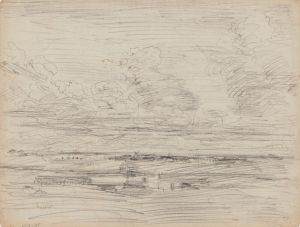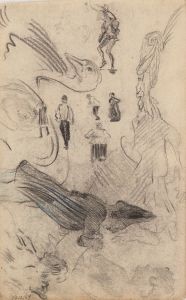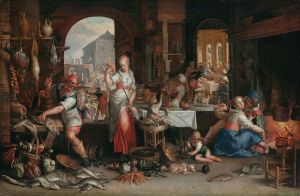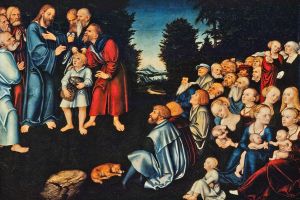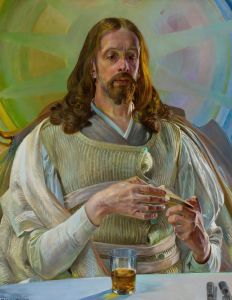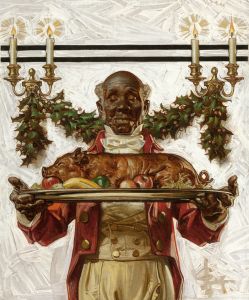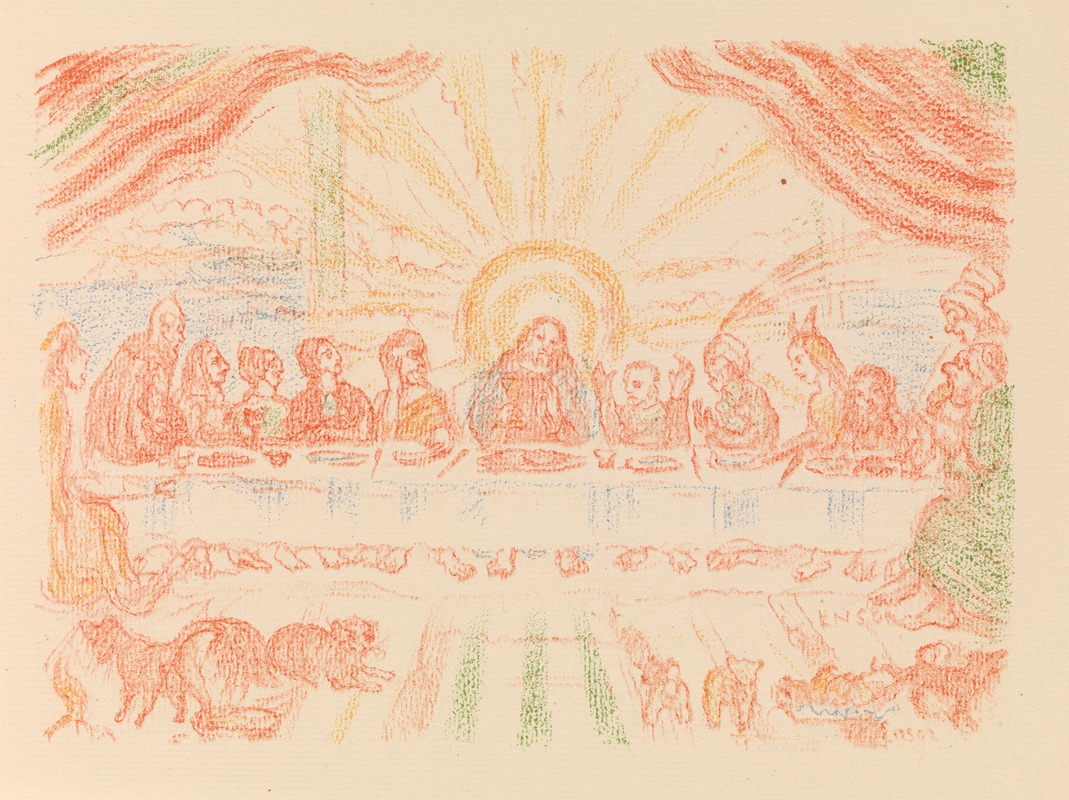
The Last Supper
A hand-painted replica of James Ensor’s masterpiece The Last Supper, meticulously crafted by professional artists to capture the true essence of the original. Each piece is created with museum-quality canvas and rare mineral pigments, carefully painted by experienced artists with delicate brushstrokes and rich, layered colors to perfectly recreate the texture of the original artwork. Unlike machine-printed reproductions, this hand-painted version brings the painting to life, infused with the artist’s emotions and skill in every stroke. Whether for personal collection or home decoration, it instantly elevates the artistic atmosphere of any space.
James Ensor, a Belgian painter and printmaker, created "The Last Supper" in 1885. Ensor is known for his unique and often macabre style, which blends elements of realism, symbolism, and expressionism. His work frequently features grotesque imagery and satirical themes, reflecting his critical view of society and its institutions.
"The Last Supper" by Ensor is an oil painting that reinterprets the traditional Christian theme of Jesus Christ's final meal with his disciples. Unlike the serene and solemn depictions by artists such as Leonardo da Vinci, Ensor's version is characterized by its chaotic and crowded composition. The painting is filled with a multitude of figures, many of whom are depicted with exaggerated, almost caricatured expressions. This approach is typical of Ensor's style, which often includes masks and distorted faces to convey a sense of absurdity and critique.
In Ensor's "The Last Supper," the central figure of Christ is surrounded by his disciples, but the scene is far from the orderly arrangement seen in classical renditions. The table is cluttered with various objects, and the figures are engaged in animated gestures and expressions. This chaotic arrangement can be interpreted as a commentary on the human condition and the complexities of social interactions.
Ensor's use of color in "The Last Supper" is also notable. He employs a vibrant and sometimes jarring palette, with bold contrasts that enhance the sense of disorder and intensity in the scene. The brushwork is loose and expressive, contributing to the overall dynamic and unsettling atmosphere of the painting.
"The Last Supper" reflects Ensor's broader artistic concerns and his interest in exploring themes of mortality, identity, and the absurdity of human existence. His work often challenges traditional religious and societal norms, using satire and grotesque imagery to provoke thought and elicit strong emotional responses from viewers.
James Ensor was a prominent figure in the Belgian avant-garde movement and a member of the influential group Les XX (The Twenty), which included other notable artists such as Fernand Khnopff and Théo van Rysselberghe. Ensor's innovative approach and distinctive style had a significant impact on the development of modern art, influencing later movements such as expressionism and surrealism.
"The Last Supper" is housed in the Royal Museum of Fine Arts in Antwerp, Belgium, where it remains an important example of Ensor's work and a testament to his unique vision. The painting continues to be studied and appreciated for its bold departure from traditional religious art and its insightful commentary on the human experience.





